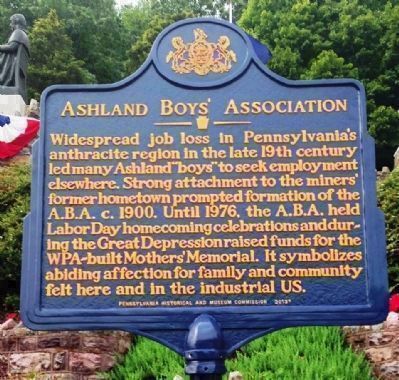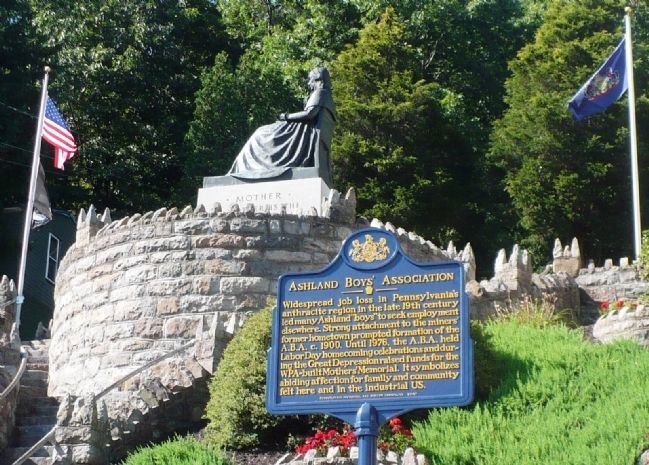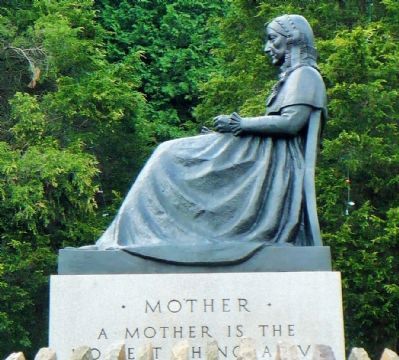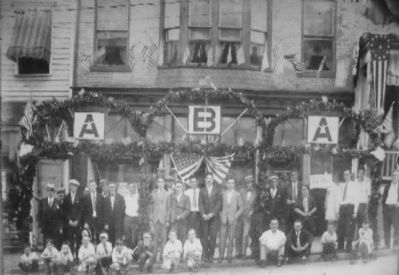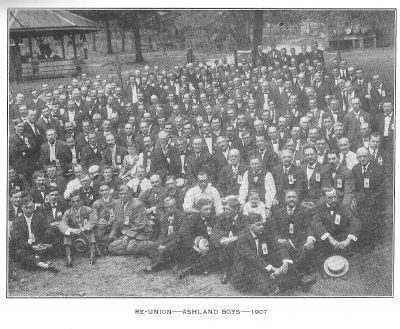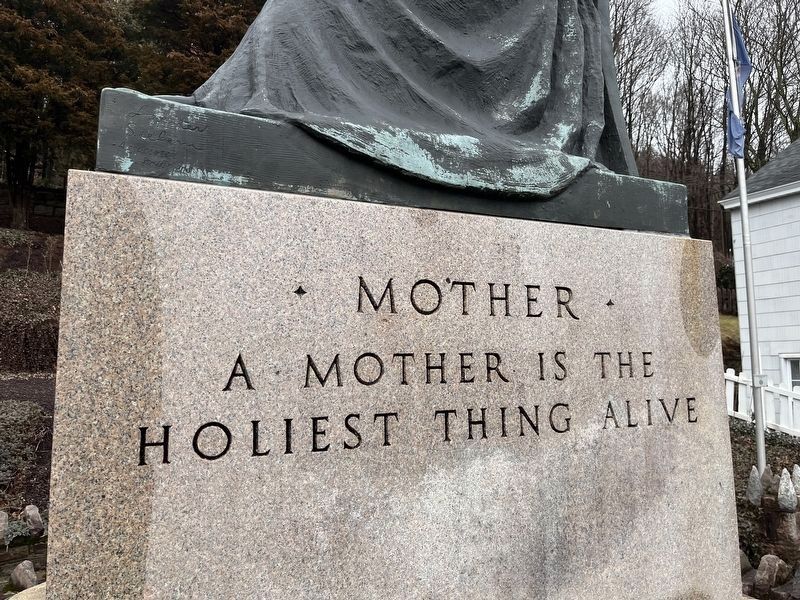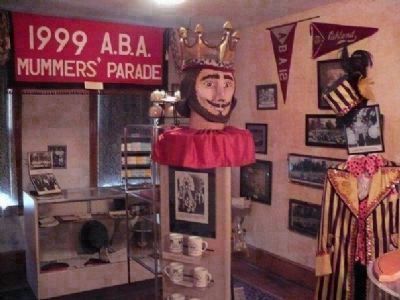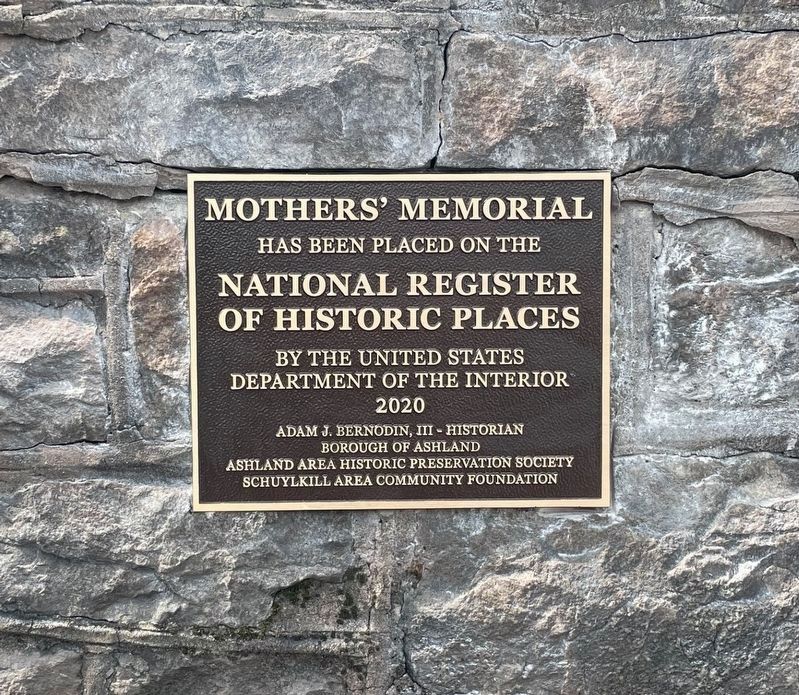Ashland in Schuylkill County, Pennsylvania — The American Northeast (Mid-Atlantic)
Ashland Boys’ Association
Erected 2013 by Pennsylvania Historical and Museum Commission.
Topics and series. This historical marker is listed in these topic lists: Fraternal or Sororal Organizations • Industry & Commerce. In addition, it is included in the Pennsylvania Historical and Museum Commission series list. A significant historical year for this entry is 1900.
Location. 40° 47.021′ N, 76° 20.233′ W. Marker is in Ashland, Pennsylvania, in Schuylkill County. Marker is on North Hoffman Boulevard (Pennsylvania Route 61 & 54). Mothers’ Memorial is at Welcome Home Plaza. Touch for map. Marker is in this post office area: Ashland PA 17921, United States of America. Touch for directions.
Other nearby markers. At least 8 other markers are within 5 miles of this marker, measured as the crow flies. Whistler Mother Painting in Bronze (a few steps from this marker); 1935 Ashland High School Pennsylvania State Champions (approx. one mile away); Fountain Springs WWII Service Honor Roll (approx. one mile away); Saint Joseph's Church Bell (approx. 3.9 miles away); Veterans Memorial (approx. 3.9 miles away); In Everlasting Memory of the Victims of 9-11-01 (approx. 4 miles away); Lt. General James M. Gavin (approx. 4.1 miles away); War Memorial (approx. 4.1 miles away). Touch for a list and map of all markers in Ashland.
More about this marker. Ashland Area Historic Preservation Society is around the corner located at 318 Centre Street. The Pioneer Tunnel Coal Mine and Steam Train, and the Museum of Anthracite Mining is a mile away.
Also see . . . MarkerQuest - Ashland Boys' Association. Information about the A.B.A. and the construction of their Mothers' Memorial. (Submitted on October 7, 2021, by Laura Klotz of Northampton, Pennsylvania.)
Additional commentary.
1. History of the Ashland Boys’ Association and Mothers’ Memorial
There was widespread job loss following the Panic of 1893, which involved the bankruptcy of the Pennsylvania & Reading Railroad. The failure of many Pennsylvania anthracite coal mines and coal miners labor issues and strikes forced many displaced anthracite coal miners to seek employment elsewhere in Pennsylvania and throughout the U.S. in the late 19th and early 20th centuries. The Borough of Ashland was a victim these circumstances like most towns associated with the anthracite coal industry, making it a representative example of a common Pennsylvania story. Between 1893 and 1900, Ashland’s population dropped from 8,900 to 6,438. During the Anthracite Miner’s Strike of 1902, an additional 30,000 coal miners left the anthracite coal region.
Many of these men lost their jobs, and left behind their cultural identity, and the roots of their anthracite heritage. This prompted the formation of a unique homecoming organization, the Ashland Boys Association, circa 1900. Their membership was made up of Ashland men and boys,regardless of their color, creed, nationality, or position in life. Ashland men decided they wanted to come back to reminisce and share their childhood memories. They wanted to keep nostalgia for their old hometown, and stay in touch with their old coal mining friends and family. The A.B.A. was an archetype of a poignant Pennsylvania story—successive waves of industrialization and economic development created and then destroyed industries and communities.
Large groups of people were left longing for past associations, and the comforts of mother, friends, and home. The pattern effected anthracite then bituminous miners, garment workers, and steel and electrical workers to name a few. Ashland, however, was the only Pennsylvania town to respond in this unique way. Ashland established a homecoming celebration as an annual event every Labor Day. The “sentimental impact” of this event was felt throughout the state and nation.
While many Ashland residents moved to the Philadelphia area because of easy access to railroad transportation and a variety of job opportunities, former Ashland residents dispersed throughout the U.S. in search of work. The Ashland Boys’ Association of Philadelphia officially chartered in 1912. The Philadelphia chapter was the backbone of the A.B.A. While other A.B.A. chapters were organized, no official records have been found. Mostly, former Ashland men participated as individuals. The Philadelphia contingent, coming home via train to Ashland was greeted by a proud coal mining hometown, and it evolved into the annual Mummers Parade. The parade brought thousands of non-Ashland residents into the borough for almost a century.
The sentiment of coming home and love of mothers began a legacy project. A committee was formed in 1937 to erect a statue to honor mothers – the Mothers’ Memorial. They chose as a subject James McNeill Whistler’s famous
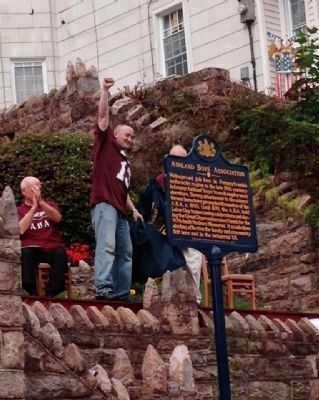
4. Ashland Boys' Association Historical Marker Unveiling
On August 31, 2013, during the 75th Anniversary celebration of the A.B.A. Mothers' Memorial, a celebration parade and dedication was held to unveil the Ashland Boys' Association State Historical Marker. The historical marker was unveiled by Adam J. Bernodin, III, Jim Klock, and Dr. William Lewis, Jr., official from the Pennsylvania Historical and Museum Commission. The historical marker dedication also included an address by 2013 Miss Pennsylvania Annie Rosellini.
The A.B.A. raised $6,000 in the midst of the Great Depression for the granite base and statue. This accomplishment was recognized as a unique aspect of WPA history in the United States. Despite the hardships of the Great Depression, the A.B.A. inspired a whole community to come together to support the project. This homecoming organization disbanded in 1976, and this Pennsylvania State Historical Marker commemorates a truly unique organization that lasted for three quarters of a century.
— Submitted September 7, 2013, by Adam J. Bernodin, III of Ashland, Pennsylvania.
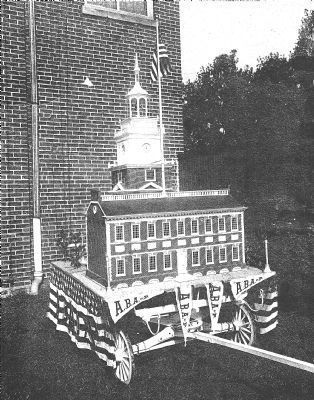
5. Ashland Boys' Association of Philadelphia
The Ashland Boys' Association of Philadelphia Chapter coming home via train to Ashland was greeted by a proud coal mining hometown. This was a Independence Hall float that was made and it represented the Philadelphia contingent. This float was pulled by the Philadelphia Ashland boys in early homecoming parades.
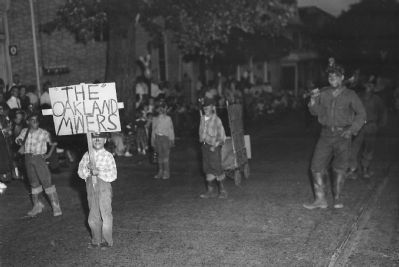
6. Ashland Boys' Association Mummers Parade Family Traditions
The "Oakland Miners" was a family tradition for generations in the Ashland Boys' Association Mummers Parade. With blackened faces and pick and shovel in hand, the Oakland Miners paid tribute to the anthracite coal trade that built the area.
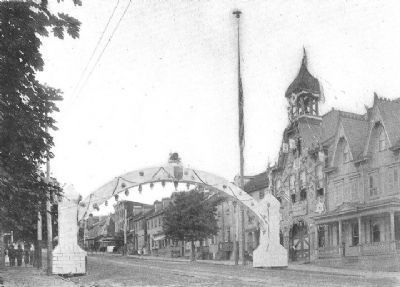
9. Arch Used In Ashland Boys' Association Scheme
The decorated arch shown above, in front of the Washington Fire Company No. 1 (Hookies), was placed across Centre street in the early 1900's. One arch stood here at the 13th and Centre Street location, and the other near 7th and Centre Street. The decoration arch lasted a couple years over the Ashland Boys' Association Homecoming weekend.
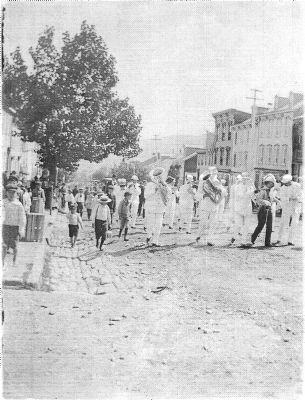
10. Ashland Boys' Association Home Staff Parade
This is the earliest Ashland Boys' Association Parade photo. The Home Staff Parade began circa 1905. The Ashland Boys' Association began their home staff when the reunions were moved from Wadleigh's Grove to Washington Park. The home staff parade began at 9 a.m. on Labor Day, and this home staff parade tradition lasted until the 1960's.
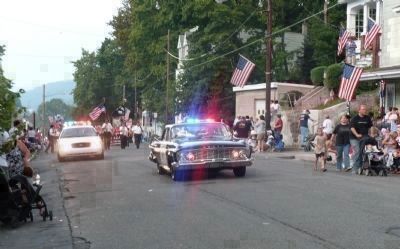
11. Ashland Boys' Association Mummers Parade History
The Philadelphia contingent coming home to Ashland off the train evolved into the annual Mummers Parade. In 1910, the first known celebration started on Saturday night at 8:00PM when the members of the Philadelphia Branch of the Ashland Boys' Association arrived in special train over the Reading Railroad. There were three coaches attached to Engine No. 97 and the train carried two hundred jolly Philadelphia Ashland Boys and their families. This was the tenth anniversary of the association and was one of the most successful celebrations in the history of the Ashland Boys' Association.
Ashland was a proud community greeting the Philadelphia contingent with a celebration. The following organizations were in line to greet the Philadelphia Branch of ABA in a informal parade: Ashland Boys Band, Philadelphia Branch of A.B.A., German Catholic Knights, Centralia Band, American Hose Company, Knights of Golden Eagle, Emmett Band, Washington Fire Company, Woodman of the World, Improved Order of Redman, Washington Light Infantry, the German Catholic Knights, a splendidly drilled organization formed the letters "A.B.A." in perfect accord and thrilled the spectators. The Ashland community all had roman candles and torches in there hands to greet the informal processions as it grew bigger.
Ashland was the only town to respond in this unique way of sentiment and pride while walking all the returnees home. The independent Ashland A.B.A. Mummers Club finally formed in 1928 according to the Ashland Daily News and at this point, everything was an organized parade. Curley Lentz from Ashland Boys' Association of Philadelphia faithfully carried an Olympic torch in the mummers parade. This was the symbol of the Philadelphia contingent and he carried the torch until he couldn't walk anymore. The parade was an anthracite coal region showcase that brought thousands of non-Ashland residents into Ashland for almost a century. The Saturday night before Labor Day will always be remembered in the hearts and minds of Ashland residents.
This is a photo of the beginning of the last mummers parade back in 2008.
Ashland was a proud community greeting the Philadelphia contingent with a celebration. The following organizations were in line to greet the Philadelphia Branch of ABA in a informal parade: Ashland Boys Band, Philadelphia Branch of A.B.A., German Catholic Knights, Centralia Band, American Hose Company, Knights of Golden Eagle, Emmett Band, Washington Fire Company, Woodman of the World, Improved Order of Redman, Washington Light Infantry, the German Catholic Knights, a splendidly drilled organization formed the letters "A.B.A." in perfect accord and thrilled the spectators. The Ashland community all had roman candles and torches in there hands to greet the informal processions as it grew bigger.
Ashland was the only town to respond in this unique way of sentiment and pride while walking all the returnees home. The independent Ashland A.B.A. Mummers Club finally formed in 1928 according to the Ashland Daily News and at this point, everything was an organized parade. Curley Lentz from Ashland Boys' Association of Philadelphia faithfully carried an Olympic torch in the mummers parade. This was the symbol of the Philadelphia contingent and he carried the torch until he couldn't walk anymore. The parade was an anthracite coal region showcase that brought thousands of non-Ashland residents into Ashland for almost a century. The Saturday night before Labor Day will always be remembered in the hearts and minds of Ashland residents.
This is a photo of the beginning of the last mummers parade back in 2008.
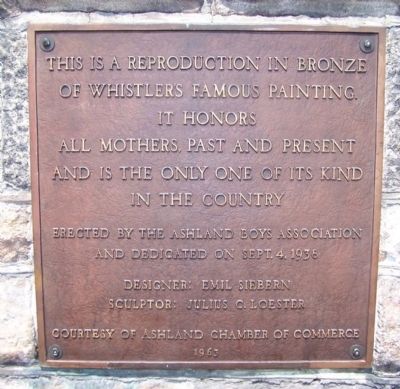
12. “This is a Reproduction in Bronze of Whistler’s Famous Painting.”
Inscription on brass plaque, visible in Photo 13, at base of Welcome Home Plaza. “It honors all mothers, past and present and is the only one of its kind in the country. Erected by the Ashland Boys Association and dedicated on Sept. 4, 1938.
“Designer: Emil Siebern; Sculptor: Julius C. Loester. Courtesy of Ashland Chamber of Commerce, 1963.”
“Designer: Emil Siebern; Sculptor: Julius C. Loester. Courtesy of Ashland Chamber of Commerce, 1963.”
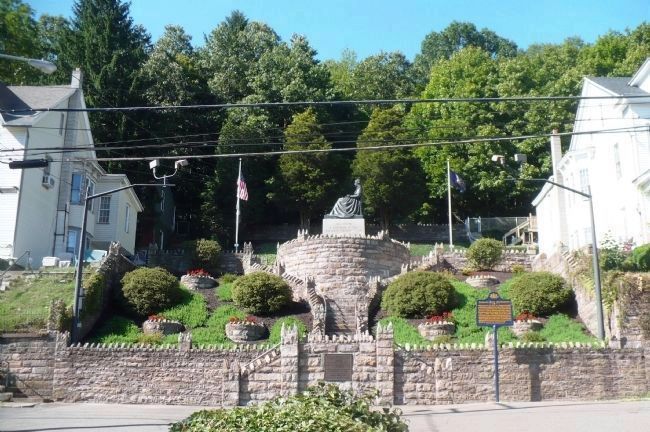
13. Mothers' Memorial at Welcome Home Plaza With Ashland Boys' Association Historical Marker
At an A.B.A. Homecoming Reunion in 1933, it was proposed to honor all Ashland mothers by erecting a monument or memorial. Members felt that such a memorial would represent the very foundation of the organization, because their motto was, “Come on home” and home evoked thoughts of one’s mother. A committee was formed in 1936 to investigate and plan the memorial. Some A.B.A. members, as well as many residents of the town, advocated the establishment of a library instead, but the memorial was decided upon and eventually gained the full support of the organization and the town. The idea of commissioning a sculpture based on the painting known as “Whistler’s Mother” was a unique one. The A.B.A. responded enthusiastically and raised over $6000 for the project. The seven foot high three-dimensional sculpture was designed by Emil Siebern and sculpted by Julius Loester. Both artists were sculptors from New York who specialized in public art—funerary decoration, memorials, park statuary, etc. Although they did not routinely work together, both participated in several projects overseen by the Works Progress Administration (WPA). The completed Ashland monument was made of bronze and placed atop an impressive stonework terrace built by the WPA in 1938.
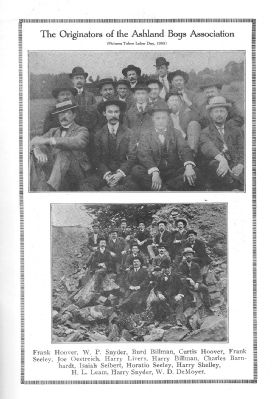
15. The Originators of the Ashland Boys' Association
Pictures taken Labor Day, 1903. Frank Hoover, W. P. Snyder, Burd Billman, Curtis Hoover, Frank Seeley, Joe Oestreich, Harry Livers, Harry Billman, Charles Barnhardt, Isaiah Seibert, Horatio Seeley, Harry Shelley, H. L. Leam, Harry Snyder, W. D. DeMoyer. Click on the image to see detail.
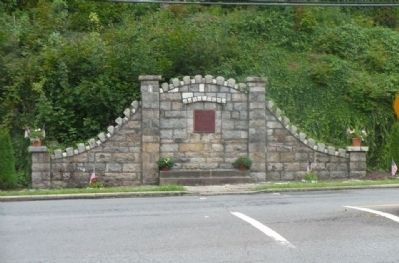
17. Dr. John L. Hoffman Memorial - Hoffman Boulevard
South 3rd Street is named Hoffman Boulevard honoring Ashland Boys' Association leader while he was alive.
The 1937 A.B.A. Homecoming Reunion, the Ashland Boys' Association approved "Whistler's Mother" as the subject on canvass for the Mothers' Memorial. A.B.A. President Dr. John L. Hoffman stated, "He didn't think any boy can honor his mother too much, whether she is living or passed to her reward." When adjournment of the Ashland Boys' Association reunion meeting was about to be taken. Oscar Nolte arose to ask President Dr. J.L. Hoffman to relinquish the chair to Vice President Horn. Walter Payne was then called upon to present a matter which he said, has been on his mind for some time. Mr. Payne reviewed the splendid work that has been done by President Hoffman as President of Ashland Borough Council and as a token of the Ashland Boys' Association's gratitude he suggested Ashland name South Third Street to "Hoffman Boulevard." A motion was immediately made by Messrs Burchfield and Meiswinkel and passed amid vociferous applause. Dr. Hoffman was much affected by the action of the Ashland Boys' Association to defer tribute until his demise but everybody was enthusiastic in their desire to honor the association's faithful president now while he is still alive and at work in Ashland.
Dr. John L. Hoffman was the main force behind the statue, and the statue overlooks Hoffman Boulevard (Pennsylvania Highway Route 61), which is named in his memory.
The 1937 A.B.A. Homecoming Reunion, the Ashland Boys' Association approved "Whistler's Mother" as the subject on canvass for the Mothers' Memorial. A.B.A. President Dr. John L. Hoffman stated, "He didn't think any boy can honor his mother too much, whether she is living or passed to her reward." When adjournment of the Ashland Boys' Association reunion meeting was about to be taken. Oscar Nolte arose to ask President Dr. J.L. Hoffman to relinquish the chair to Vice President Horn. Walter Payne was then called upon to present a matter which he said, has been on his mind for some time. Mr. Payne reviewed the splendid work that has been done by President Hoffman as President of Ashland Borough Council and as a token of the Ashland Boys' Association's gratitude he suggested Ashland name South Third Street to "Hoffman Boulevard." A motion was immediately made by Messrs Burchfield and Meiswinkel and passed amid vociferous applause. Dr. Hoffman was much affected by the action of the Ashland Boys' Association to defer tribute until his demise but everybody was enthusiastic in their desire to honor the association's faithful president now while he is still alive and at work in Ashland.
Dr. John L. Hoffman was the main force behind the statue, and the statue overlooks Hoffman Boulevard (Pennsylvania Highway Route 61), which is named in his memory.
Credits. This page was last revised on March 8, 2024. It was originally submitted on September 7, 2013. This page has been viewed 3,978 times since then and 116 times this year. Last updated on December 21, 2022. Photos: 1, 2. submitted on September 7, 2013. 3, 4, 5, 6, 7, 8, 9, 10, 11. submitted on August 14, 2014. 12, 13. submitted on September 8, 2013. 14. submitted on January 6, 2023, by Adam Margolis of Mission Viejo, California. 15. submitted on September 8, 2013. 16. submitted on September 7, 2013. 17. submitted on September 8, 2013. 18. submitted on March 7, 2024, by Adam J. Bernodin, III of Ashland, Pennsylvania. • J. Makali Bruton was the editor who published this page.
